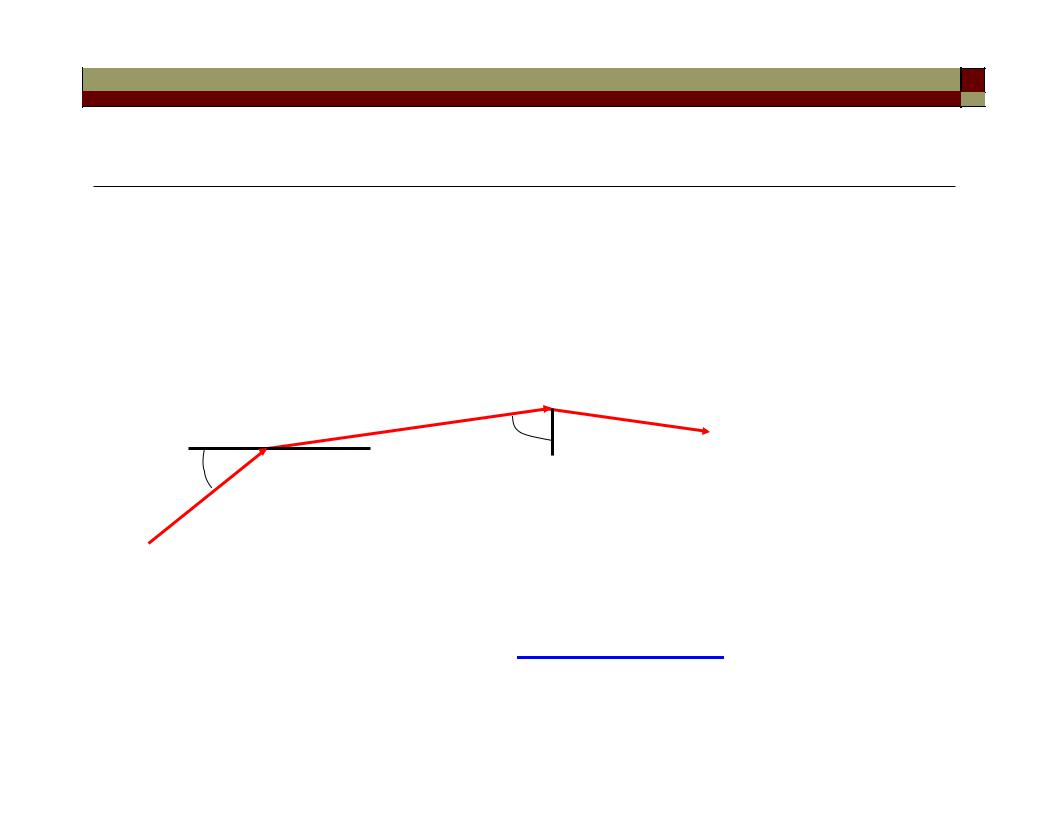
Lect5-Optical_fibers_2
.pdf
Lecture 5: Optical fibers
Optical fiber basics Linearly polarized modes
Field analysis/wave equation of weakly guiding fibers
Attenuation in fibers Dispersion in fibers
References: Photonic Devices, Jia-Ming Liu, Chapter 3
*Most of the lecture materials here are adopted from ELEC342 notes.
1

Optical fiber structure
• A typical bare fiber consists of a core, a cladding, and a polymer jacket (buffer coating).
typically 250 m including jacket for glass fibers
• The polymer coating is the first line of mechanical protection.
• The coating also reduces the internal reflection at the cladding, so light is only guided by the core.
2

Silica optical fibers
• Both the core and the cladding are made from a type of glass known as silica (SiO2) which is almost transparent in the visible and near-IR.
• In the case that the refractive index changes in a “step” between the core and the cladding. This fiber structure is known as step-index fiber.
• The higher core refractive index (~ 0.3% higher) is typically achieved by doping the silica core with germanium dioxide (GeO2).
3

Step-index silica optical fiber cross-section
n2
n 1
n 2
refractive index < 1%
n1 core n2 cladding
m 125 m 5.62
n2
n 1
n 2
refractive index < 1%
n1 core n2 cladding
m 125 m 8
Multi-mode fiber |
|
Single-mode fiber |
• Multi-mode fiber: core dia. ~ |
50 or |
62.5 or 100 m; cladding dia. ~ 125 m |
• Single-mode fiber: core dia. ~ |
8 - 9 |
m; cladding dia. ~ 125 m |
Both fiber types can have the same numerical aperture (NA) because NA is independent of the fiber core diameter!
4

Light ray guiding condition
• Light ray that satisfies total internal reflection at the interface of the higher refractive index core and the lower refractive index cladding can be guided along an optical fiber.
cladding n2 |
|
core n1 |
θ |
|
θ |
e.g. Under what condition will light be trapped inside the fiber core? n1 = 1.46; n2 = 1.44
θ > θc
θc |
= sin-1 (n2/n1) = sin-1 (1.44/1.46) = 80.5o |
|
5 |

Acceptance angle
• Only rays with a sufficiently shallow grazing angle (i.e. with an angle to the normal greater than θc) at the core-cladding interface are transmitted by total internal reflection.
|
|
|
|
|
|
|
|
αc |
θc |
|
|
|
||
|
|
|
||
θa |
|
n1 |
|
|
na |
n2 |
|
||
A |
|
|||
|
|
|
||
• Ray A incident at the critical angle θc at the core-cladding interface enters the fiber core at an angle θa to the fiber axis, and is refracted at the air-core interface.
6

Acceptance angle
θ < θa |
θa |
|
n |
1 |
αc |
θc |
|
na |
|
|
|
||
|
|
n2 |
|
|
||
|
|
|
|
|
θ > θa |
|
|
αc |
θc |
|
θa |
|
n1 |
|
|
na |
n2 |
|
|
|
|
|
|
• Any rays which are incident into the fiber core at an angle > θa |
|
have an incident angle less than θc at the core-cladding interface. |
|
These rays will NOT be totally internal reflected, thus eventually loss |
|
to radiation (at the cladding-jacket interface). |
7 |
|

Acceptance angle
• Light rays will be confined inside the fiber core if it is input-coupled at the fiber core end-face within the acceptance angle θa.
e.g. What is the fiber acceptance angle when n1 = 1.46 and n2 = 1.44?
θc = sin-1 |
(n2/n1) = 80.5o => αc = 90o - θc = 9.5o |
|||
using |
sin θa = n1 sin αc |
(taking na = 1) |
||
θa |
= |
sin-1 |
(n1 sin αc) = sin-1 (1.46 sin 9.5o) ~ 14o |
|
=> |
the acceptance angle θa |
~ 14o |
||
8

Fiber numerical aperture
In fiber optics, we describe the fiber acceptance angle using
Numerical Aperture (NA):
NA = na sin θa = sin θa = (n12 - n22)1/2
|
|
|
|
|
|
αc |
θc |
|
|
||
|
|
||
θa |
n1 |
|
|
n2 |
|
||
na |
|
||
|
|
|
|
• We can relate the acceptance angle θa and the refractive indices of the core n1, cladding n2 and air na.
9

Fiber numerical aperture
• Assuming the end face at the fiber core is flat and normal to the fiber axis (when the fiber has a “nice” cleave), we consider the refraction at the air-core interface using Snell’s law:
At θa: |
na sin θa |
= |
n1 sin αc |
|
||
launching the light from air: |
sin θa |
= |
n1 sin αc |
|
||
(na ~ 1) |
|
= n1 cos θc |
|
|||
|
|
|
||||
|
|
= n1 |
(1 - sin2θc)1/2 |
|
||
|
|
= n1 |
(1 - n22/n12)1/2 |
|
||
|
|
= (n |
2 |
- n 2)1/2 |
10 |
|
|
|
|
1 |
2 |
|
|
